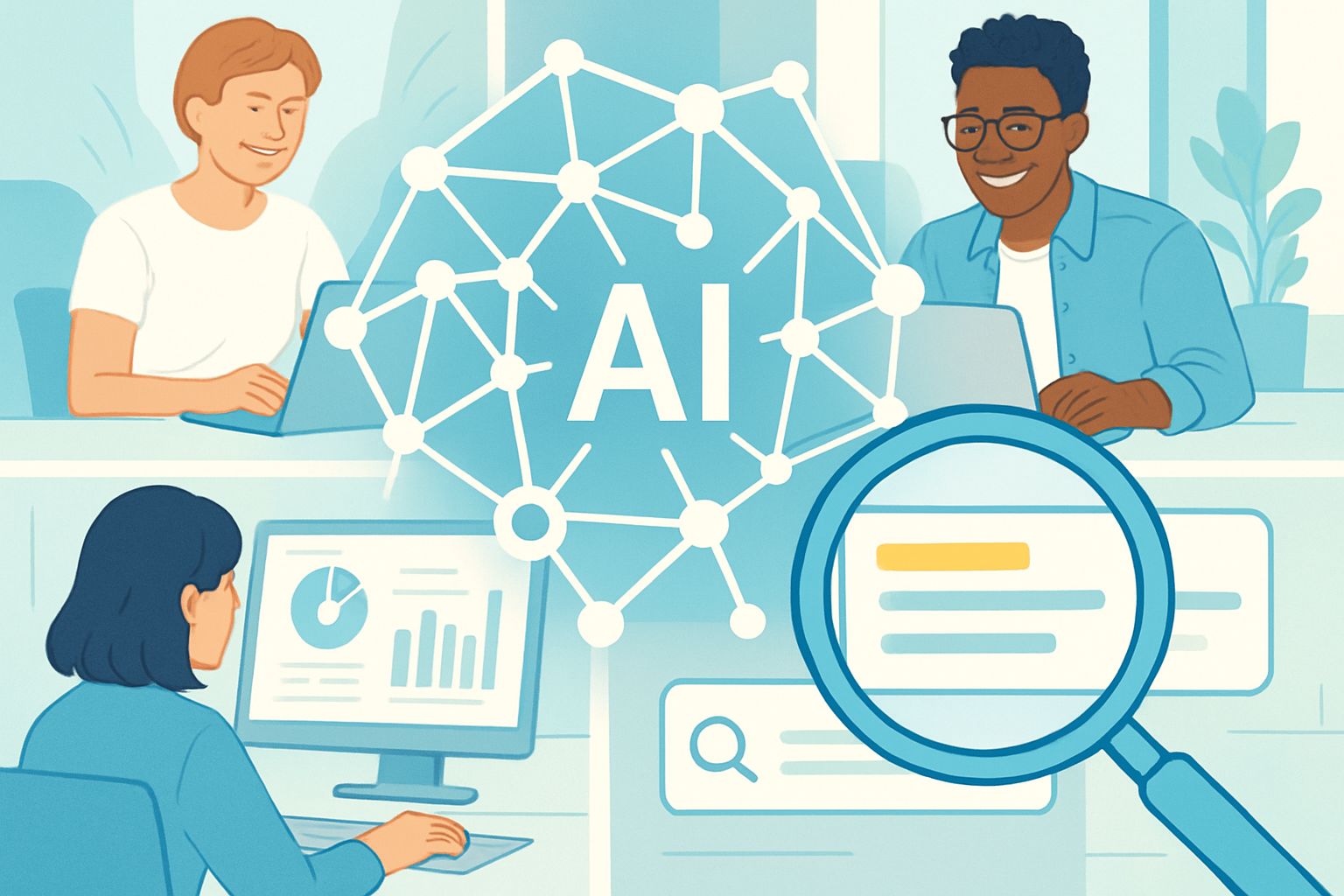
AI CERTs
14 hours ago
AI Visual Intelligence Boosts Google Photos Editing, Search
Google Photos just received its largest upgrade since 2024. The release pivots on AI Visual Intelligence woven directly into everyday photo workflows. Users across 100-plus countries can now request nuanced edits or advanced searches by speaking casually. Meanwhile, the Gemini-based Nano Banana model drives photorealistic transformations within the mobile editor. Consequently, creative power once limited to professionals now sits inside any mid-range smartphone. This article unpacks the new features, deployment scope, competitive context, and unresolved concerns. Additionally, readers will learn how Google balances innovation with privacy regulation. Stay with us for a clear, data-driven analysis. Furthermore, we spotlight opportunities for designers seeking formal credentials in this expanding field. Understanding these shifts is essential for product leaders evaluating 2026 roadmaps. Therefore, we begin with an overview of the global rollout schedule.
Global Feature Rollout Overview
Google announced the six-part update on 11 November 2025 via its product blog. Ask Photos now supports more than 100 additional countries and 17 new languages. Moreover, staged server-side deployment means capabilities may surface gradually over several weeks. Availability depends on platform, account eligibility, and enabling Gemini features inside settings. In contrast, Texas and Illinois users remain excluded because of biometric privacy constraints. Consequently, enterprises planning campaigns must verify regional access before launching user communications. This global expansion marks our second mention of AI Visual Intelligence as a market driver. Broad geographic reach signals Google’s confidence in Gemini performance. However, fragmented state rules foreshadow continuing policy friction. With scope established, we next examine how Gemini powers editing.

Gemini Image Model Power
Nano Banana leverages Gemini 2.5 Flash for high-fidelity style transfers and object manipulations. Furthermore, the model strengthens AI Visual Intelligence capabilities by reading metadata and on-device face groups. Users can request a Renaissance portrait, cartoon rendering, or polished product pack-shot in seconds. Consequently, Nano Banana competes head-to-head with Adobe’s Generative Fill and Microsoft Designer.
- Peak edit latency under three seconds on Pixel 10 Pro.
- Supports 15 predefined creative templates at launch.
- Handles 4K resolution without cloud offload for most AI Visual Intelligence tasks.
- Version control lets users revert instantly to originals.
These metrics reinforce Google’s commitment to responsive, on-device image AI tools. Nevertheless, heavier composite edits still rely on Private AI Compute within Google’s secure cloud. These technical realities clarify performance boundaries. Next, we explore the conversational editing workflow enabled by this horsepower.
Conversational Editing Workflow Explained
Help Me Edit brings chat-style instructions to the familiar Photos editor. Moreover, the feature now personalizes suggestions using private face groups, assuming users opt in. A photographer might type, “Brighten Alex, blur background,” and see a layered adjustment instantly. Meanwhile, voice inputs mirror the text flow, aiding accessibility and rapid ideation. Google claims no ad targeting relies on this conversation data. However, employees may review queries in rare abuse cases, according to public policy notes. The conversational layer further operationalizes AI Visual Intelligence for consumer creativity. In contrast to desktop image AI tools, this workflow removes export friction. Overall, natural language lowers the editing skill threshold. We now examine expanded search capabilities.
Expanded Natural Language Search
Ask Photos extends Gemini search across 6 billion daily uploads. Users can now ask, “Show beach trips with Maria in 2023,” and receive curated albums. Additionally, a new in-photo Ask button enables context-aware queries while viewing a single image. The system integrates OCR and face recognition to generate precise results. Consequently, visual search systems reach unprecedented convenience inside consumer libraries. Importantly, Google blocks the feature in Texas and Illinois over biometric law concerns. Yet the company frames AI Visual Intelligence as privacy respecting because no ads use personal data. Moreover, unlike some cloud image AI tools, Ask Photos processes thumbnails locally before cloud inference. Precision plus scope promises significant productivity gains. However, privacy remains central to adoption.
Privacy And Regulatory Landscape
Google reiterates that Photos data never trains external models or feeds advertising. Nevertheless, watchdogs point to face-group reliance as a biometric risk area. Consequently, regulatory frameworks such as Illinois’ BIPA shape availability and potential liabilities. Privacy advocates warn that advanced visual search systems could expose sensitive contexts without explicit consent. In contrast, Google’s Private AI Compute aims to balance cloud horsepower with encrypted processing. Maintaining trust will determine whether AI Visual Intelligence scales beyond early adopters.
Key compliance considerations include:
- Explicit opt-in for face groups.
- Clear retention timelines for generated content.
- Granular geographic gating by jurisdiction.
- Transparent audit trails for corrections.
Addressing these points could unlock broader AI Visual Intelligence deployments. Market dynamics also influence strategic choices.
Competitive Market Reactions Today
Adobe, Apple, and Microsoft quickly highlighted overlapping offerings after Google’s announcement. Moreover, Adobe’s Generative Fill now integrates an AI assistant within Photoshop’s web edition. Apple touts Apple Intelligence tying iCloud memories to on-device synthesis. Consequently, rivalry accelerates investment in consumer image AI tools across ecosystems. Analysts suggest Google’s 100-country launch raises bars for localization and safety narratives. Meanwhile, independent startups focus on niche visual search systems specialized for e-commerce catalogs. Yet, scale gives AI Visual Intelligence within Google Photos a powerful network effect. Professionals can enhance insight through the AI + UX DesignerCertification program. Competitive pressure will quicken release cycles across platforms. Finally, we synthesize key lessons.
Google’s latest update positions Photos as a front-line laboratory for mainstream generative imaging. Overall, AI Visual Intelligence now informs editing, discovery, and business strategy alike. Furthermore, Gemini’s Nano Banana model shortens creative loops while preserving version control. Powerful visual search systems support quick recall of memories across massive libraries. However, biometric laws and privacy expectations will dictate future rollouts. Consequently, enterprises must track jurisdictional guidance and communicate limitations transparently. Integrators evaluating image AI tools should benchmark latency, guardrails, and audit readiness.



